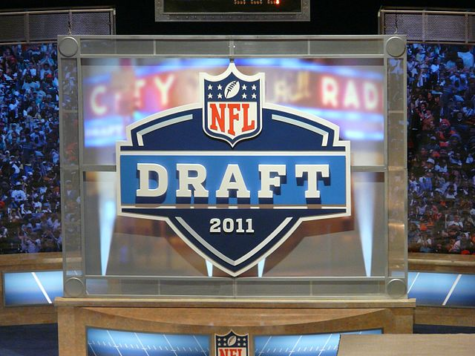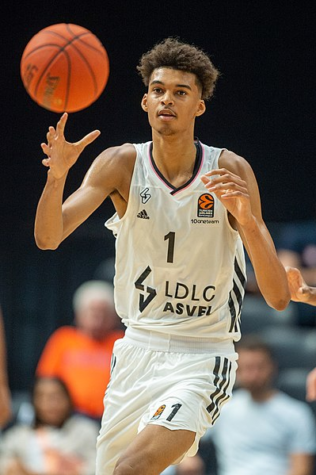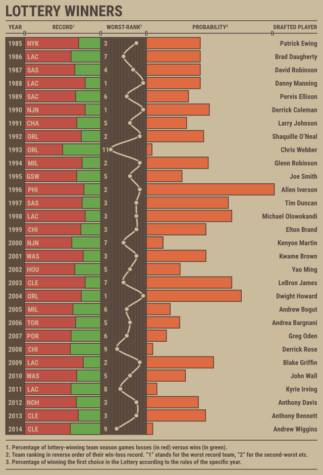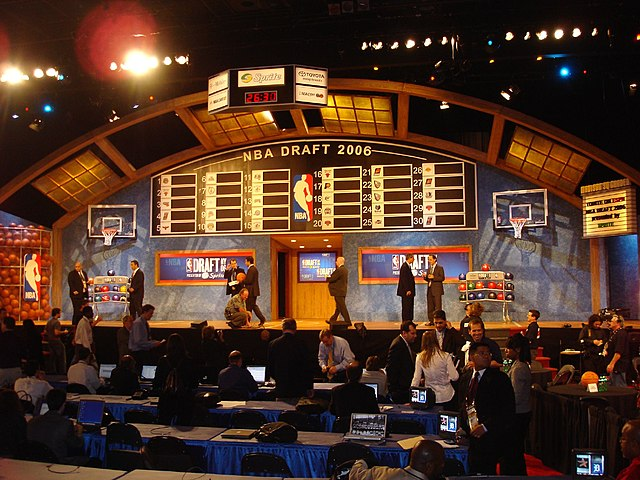Professional Sports Teams Are Trying their Best…To Lose
NFL and NBA teams are now turning to losses in order to win championships, through the “tanking” phenomenon.
bikeride from Canton, CT, USA, CC BY 2.0
Many teams put their faith in the draft, hoping to find a star in exchange for their tanking.
Losing in order to win? In the NBA and NFL, the tanking strategy is taking over, attacking the integrity of individual sports, and more importantly, the integrity of competition itself.
The NFL and NBA employ the drafting system to integrate new players into the league. The teams in the league take turns picking eligible prospects out of college and international teams in the hope of finding the next star. This system is in place so that the teams with the worst records end up with the higher picks, giving them first dibs at picking out of the player pool and the best chance to grab the best player.
“Tanking” is the practice of a team intentionally performing poorly to receive a draft pick higher up the order. High draft picks are seen as the jumpstart cable for an NFL or NBA franchise to turn things around, with the possibility of nabbing a potential Lebron or Patrick Mahomes to take them to the promised land.
In recent years, this has become an increasingly worrying trend that is spreading like wildfire. In 2021, seven NBA teams had a win percentage under 40, and six NFL teams had a percentage worse than 30. The Indiana Pacers and the Portland Trail Blazers capped off their train wrecks of a season by losing ten and eleven straight games, respectively. The New York Giants and the Carolina Panthers ended their ’21 season with a six and seven-game losing streak each.
Tanking has introduced both the NBA and the NFL to a new wave of problems, infecting the integrity of two of the sports so many love. It ruins the experience of being a fan. Fans want their teams to play at their best, with dreams of lifting the Lombardi Super Bowl Trophy or Bill O’Brian NBA Finals trophy, respectively.
However, when teams become insistent on performing to the worst level they possibly can, even the most die-hard fans become disengaged. “It has discouraged me from watching; last year the New York Giants’ Quarterback (QB) Daniel Jones became injured and the management decided to sit him out for the rest of the season and play backup QBs, causing the Giants to lose pretty much every game during the second half of the season,” said lifelong Giants fan Eliot Levin ’23. Staying up until the late hours of the night to watch a game suddenly loses its appeal when your professional team begins to look like a high school JV team playing a professional team.
The Giants aren’t the only New York football team to subject their fans to poor performances in recent years, either. The Jets have failed to make the playoffs every year since 2010, leading to a less-than-enjoyable span for fans. “It’s not fun when my team doesn’t give 100% effort, 100% of the time,” said Niall Sauer, one of the many Jets fans that have had to endure the consistent mediocrity of their team.
However, fans are far from the only people affected by the tanking epidemic. Tanking ruins the motivation of both players and coaches alike, who have to play their games knowing that their front office is actively working their hardest to have them lose. Teams that have tanked for an extended period of time end up destroying the potential of already-existing young players on their teams, and wasting the years of veterans and players in their primes. Take the case of De’Aaron Fox, an extremely athletic, electrifying guard, being left to sit on the roster of the abysmal Sacramento Kings franchise. Even though he has averaged an incredible 19.3 ppg (points per game) over his six-year career, his team hasn’t reached the playoffs and has averaged a dismal 31.6 wins per season.
Tanking also deeply impacts the integrity of sports. In both basketball and football, it is unfair to play against a team that offers essentially a free win, and this affects the legitimacy of the competition. This issue has become so pervasive that NFL coaches are reportedly paying their teams’ head coaches to intentionally lose the most games that they can. During the 2019 NFL season, Miami Dolphins head coach Brian Flores accused his employers of offering him an incentive of $100k dollars per loss. However, Flores was able to muster five wins that season, even with his entire franchise against him, and proceeded to lead the ’fins to their first back-to-back winning seasons since 2003 in the following two seasons. Shockingly, after his two successful seasons, Miami promptly fired him before the 2022-23 season. When asked about his fallout with the organization, Flores said, “This game, you know, changed my life. So to attack the integrity of the game, that’s what I felt was happening in that instance. And I wouldn’t stand for it….I think it hurt my standing within the organization and ultimately was the reason why I was let go.”
And it’s not just the Dolphins. Former Cleveland Browns head coach (HC) Hue Jackson tweeted in response to the Brian Flores situation that he was paid “a good number” to lose in his 2 seasons with the franchise (The Browns went a historically bad 3-36-1 over his tenure).
The trend of NFL owners supporting the tanking tradition is one that is worrying to the sport. The owners are the bankroll – ultimately, it’s their team. If they want something to happen, even if it ruins the sacred integrity of the game, they can do it.
Both the NBA and NFL have been trying to fix this issue for decades now. The NFL implements a fixed draft position system, meaning that the picks go from worst record first to best records last (The Super Bowl Champs get pick 32). The NBA, however, has attempted to combat tanking with a lottery drafting system. The way it works is the teams with the worst 3 records get an equal 14% chance of “winning” the first pick. From that point on, the odds decrease in record order, just like the NFL. Ultimately, the picks are chosen with ping-pong balls, just like your classic Mega-Millions or Powerball lottery.

The NBA’s system should, in theory, mean that teams no longer tank given that they lack the guaranteed high pick. In fact, teams commonly drop down in the order, with teams such as the Knicks failing to move up in draft position since 1985. Unfortunately, in spite of this, the lottery system has failed to prevent teams from tanking, with some suggesting that it enhances the issue. This is commonly attributed to the idea that with the system, more teams have a chance at the #1 pick, encouraging the tanking process. In the current NBA season alone, it appears that around seven teams are currently tanking for the chance to draft one of the best top prospects in NBA history, Victor Wembanyama.

To solve this problem, people have looked to other sports in order to gain inspiration. Across the pond in the English Premier League for soccer, the bottom three teams in the table are relegated (dropped) to England’s second division, The EFL Championship. Although this works for soccer, it couldn’t currently function for either the NBA or NFL. The issue stems from the fact that the NBA and NFL are the only two professional leagues in the country for their sport, meaning that relegation couldn’t be feasible.
For the NFL, it has been suggested to impose a lottery system the likes of the NBA lottery – however, it has been rebutted by the fact that the NBA faces the same problems in spite of the lottery system. Then there has been the radical suggestion to abolish the draft system and enter incoming players into the already existing free-agent pool. However, this would simply mean that larger-market teams would be able to dominate the market by throwing lumps of money unmatchable by small-market teams.
The entire system of the draft in the major U.S. sports leagues is to provide aid to the less competitive teams, and reduce the skill disparity between teams. Unfortunately, top draft picks are far from a guarantee for a game-changing player: In 2017, the Philadelphia 76ers drafted Markelle Fultz with the #1 pick, whose career was derailed by injuries before completing his first season with the team. In the 2021 NFL draft, the New York Jets, with the second pick, selected QB Zach Wilson, who has proved to be less effective at the position than a DIII college player.

As we watch the NFL’s 103rd season and the NBA’s 76th, the truth is that there is neither a clear nor entirely feasible answer to the glaring issue of tanking that plagues both series. In fact, the teams that use the strategy in an attempt to “save” their franchises should worry about something else – saving the integrity of their sport.
The owners are the bankroll – ultimately, it’s their team. If they want something to happen, even if it ruins the sacred integrity of the game, they can do it.
Sebastian Rosero-Mayer is a Sports Editor for ‘The Science Survey.’ He enjoys writing journalistic articles, as it allows him to share his ideas on...

